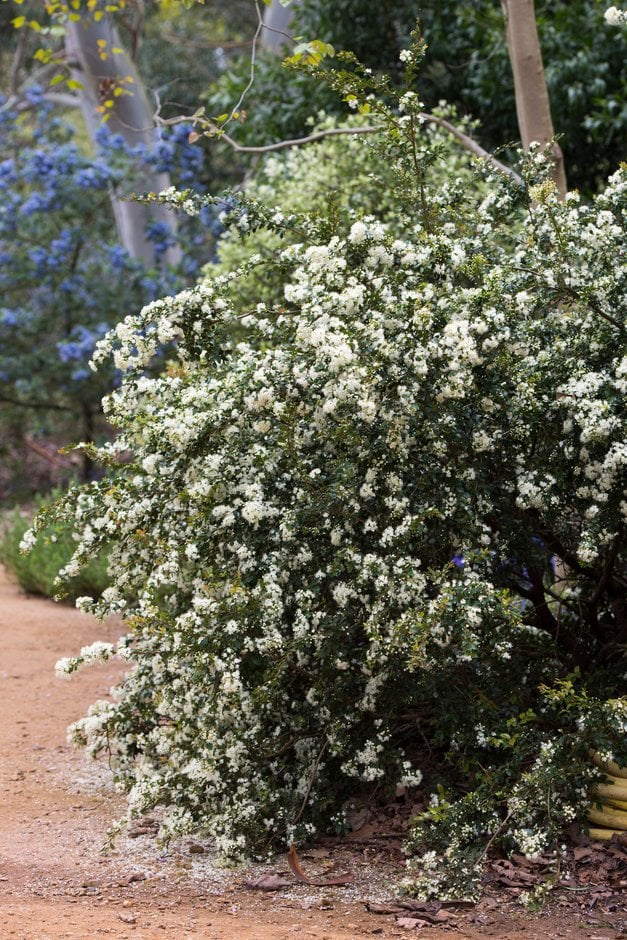Amomyrtus luma
Chilean myrtle
A large shrub or multi-stemmed tree with attractive, flaking bark and aromatic, evergreen foliage. Clusters of small, fragrant, five-petalled flowers with long stamens are produced in spring, followed by edible, aromatic berries, red at first turning black
Synonyms
Myrtus lechlerianaSize
Ultimate height
4–8 metresTime to ultimate height
20–50 yearsUltimate spread
2.5–4 metresGrowing conditions
Moisture
Moist but well–drainedpH
Acid, Alkaline, NeutralColour & scent
| Stem | Flower | Foliage | Fruit | |
| Spring | White | Green | ||
|---|---|---|---|---|
| Summer | Green | Red | ||
| Autumn | Green | Black | ||
| Winter | Green |
Position
- Full sun
Aspect
West–facing or South–facing
Exposure
Sheltered Hardiness
H3Botanical details
- Family
- Myrtaceae
- Native to GB / Ireland
- No
- Foliage
- Evergreen
- Habit
- Bushy
- Genus
Amomyrtus are evergreen shrubs or small trees with aromatic leaves and small, fragrant, bowl-shaped, five-petalled flowers in spring
- Name status
Correct
- Plant range
- Chile
How to grow
Cultivation
Grow in moderately fertile, moist but well-drained soil in a sunny position sheltered from cold, drying wind
Propagation
Propagate by seed sown in containers in a cold frame in spring, or by semi-ripe cuttings rooted with gentle bottom heat in late summer
Suggested planting locations and garden types
- Architectural
- Coastal
- Mediterranean climate plants
- City and courtyard gardens
- Cottage and informal garden
- Low Maintenance
- Wall side borders
Pruning
Pests
Generally pest-free
Diseases
Generally disease-free
Get involved
The Royal Horticultural Society is the UK’s leading gardening charity. We aim to enrich everyone’s life through plants, and make the UK a greener and more beautiful place.

